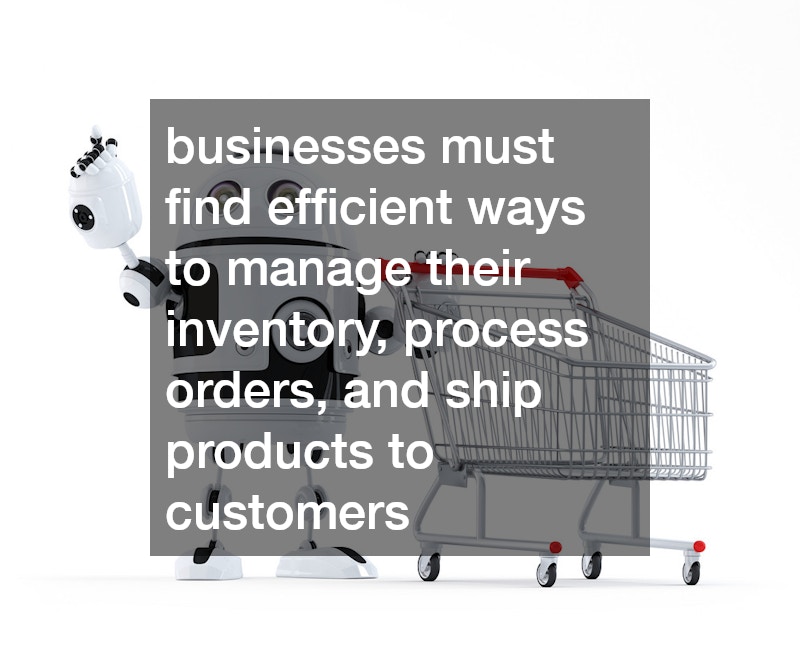As e-commerce continues to grow, businesses must find efficient ways to manage their inventory, process orders, and ship products to customers. Shopify has become one of the most popular platforms for online businesses due to its user-friendly interface and powerful features. However, managing Shopify fulfilment can present various challenges, particularly as your business scales. Addressing these challenges head-on is essential for maintaining customer satisfaction and ensuring smooth operations.
In this article, we’ll explore some common Shopify fulfilment challenges and provide actionable solutions to overcome them.
1. Inventory Management Issues
One of the biggest challenges for businesses using Shopify fulfilment is managing inventory effectively. Maintaining the right balance of stock is critical—too much inventory can result in increased holding costs, while too little can lead to stockouts and missed sales opportunities. Poor inventory management also affects customer satisfaction, as products that are marked as “out of stock” or unavailable can frustrate potential buyers.
How to Overcome This:
Use inventory management software: Shopify offers integrations with numerous inventory management tools that provide real-time stock tracking, automate restock alerts, and help you manage multiple sales channels from one platform. Apps like Stocky or TradeGecko allow you to sync your inventory across different locations, reducing the risk of overselling or stockouts.
Implement forecasting: Analyze historical sales data to forecast demand more accurately. By predicting trends and busy seasons, you can adjust your stock levels accordingly and ensure you have enough inventory to meet customer demand without over-ordering.
Set reorder points: Automatically reorder stock when it falls below a certain threshold to avoid running out of popular items.
2. Shipping Delays
Shipping delays can seriously damage your business’s reputation, especially in an era where consumers expect fast and reliable deliveries. This is a common challenge with Shopify fulfilment, as relying on third-party carriers or fulfilment centers can sometimes lead to delays beyond your control.
How to Overcome This:
Partner with reliable carriers: Shopify integrates with various shipping carriers, so it’s important to choose partners known for their reliability and timely deliveries. Using Shopify Shipping allows you to compare rates and delivery times from different carriers, helping you make informed decisions.
Set clear shipping expectations: Communicate realistic shipping timelines to your customers from the start. Providing tracking information and regular updates can help manage customer expectations and reduce anxiety if there are delays.
Leverage Shopify Fulfilment Network (SFN): Shopify’s fulfilment network provides reliable warehousing and fast shipping options, particularly for businesses in the U.S. and Canada. By outsourcing fulfilment to SFN, you can reduce shipping times and improve delivery accuracy.
3. Inaccurate Order Picking and Packing
Errors in order picking and packing can lead to wrong items being shipped, damaged products, or incomplete orders. These mistakes not only increase operational costs but can also hurt your brand’s reputation if customers receive incorrect or defective items.
How to Overcome This:
Automate fulfilment processes: Implement barcode scanning systems or automated fulfilment tools that integrate with Shopify. These systems help to ensure accuracy by verifying product details and quantities before shipping. Using apps like ShipHero or EasyShip can reduce manual errors and streamline your fulfilment process.
Implement quality control checks: Establish clear guidelines for picking and packing orders, and make quality checks a standard part of the process. Ensure that your team inspects every order for accuracy before sealing the package.
Train your fulfilment team: Proper training for warehouse staff or fulfilment partners is essential to reduce errors. Training on product identification, packaging techniques, and the importance of accuracy will help minimize mistakes.
4. High Shipping Costs
For many Shopify businesses, shipping costs represent a significant expense, especially for small or medium-sized companies. High shipping costs can deter customers from completing their purchase at checkout or eat into your profit margins if you’re offering free or discounted shipping.
How to Overcome This:
Negotiate better rates with carriers: If your business ships a high volume of products, you may be able to negotiate better rates with shipping carriers. Shopify Shipping also offers discounted rates with major carriers like USPS, UPS, and DHL.
Offer shipping incentives strategically: Free shipping is an effective way to attract customers, but it should be used strategically to avoid draining your profits. Consider offering free shipping for orders above a certain value to encourage larger purchases. Additionally, pass on shipping costs to customers by charging a flat rate that covers your average shipping expenses.
Use fulfillment centers strategically: Consider partnering with fulfilment centers closer to your customer base to reduce shipping distances and costs. Shopify Fulfilment Network (SFN) can distribute your inventory across multiple locations, ensuring faster and more cost-effective delivery to your customers.
5. Handling Returns and Exchanges
Efficiently managing returns and exchanges is a common Shopify fulfilment challenge, especially in the fashion and retail industries, where return rates tend to be higher. A disorganized return process can lead to delays, stock mismanagement, and frustrated customers.
How to Overcome This:
Create a clear return policy: Your return policy should be transparent, easy to understand, and accessible. Outline the conditions under which returns are accepted, the timeframe, and any associated costs. A simple and fair return policy builds trust with your customers.
Automate return handling: Use Shopify apps like Returnly or AfterShip Returns Center to automate the return process. These apps allow customers to generate return labels, track the status of their returns, and receive automated updates. Automation reduces the burden on your team and ensures a smoother return experience for customers.
Inspect returned goods promptly: Implement a system to quickly inspect and process returned items so they can be restocked or repaired as necessary. This ensures you don’t have inventory tied up in the return process, improving cash flow and product availability.
Final Thoughts: Overcoming Shopify Fulfilment Challenges
Effective Shopify fulfilment is critical to the success of your e-commerce business. By addressing common challenges such as inventory management, shipping delays, and order accuracy, you can ensure a smooth and efficient fulfilment process that keeps customers happy and improves your bottom line. Leveraging the right tools, adopting best practices, and seeking support from Shopify’s fulfilment network or trusted third-party partners will enable your business to thrive in the competitive e-commerce landscape.
.








